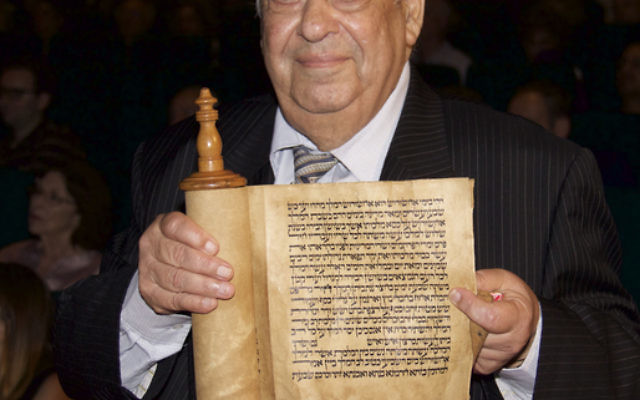Spotlight on the ‘forgotten refugees’
"In NSW, we are no longer the forgotten Jews", former AUJS NSW president Hila Tsor – of Libyan and Iraqi heritage – declared at the third annual recognition ceremony of the plight of Jews from Arab lands and Iran, attended by more than 380 people on November 30 at the Entertainment Quarter, Moore Park.

“IN NSW, we are no longer the forgotten Jews”, former AUJS NSW president Hila Tsor – of Libyan and Iraqi heritage – declared at the third annual recognition ceremony of the plight of Jews from Arab lands and Iran, attended by more than 380 people on November 30 at the Entertainment Quarter, Moore Park.
“I’m thrilled to the point of emotion that the Sydney Jewish Museum (SJM) has included a display [about Mizrachi, or Eastern, Jews] in its permanent exhibition [plus a temporary exhibition in the planning phase].
“We’re proud and grateful that our history has become part of our [NSW’s Jewish community] broader and collective memory.”
Film, food and fascinating personal insights shone a much-needed light on the approximately 850,000 Jews who fled due to persecution, or were forced out of, much of the Middle East in the 20th century, and who now make up more than half of Israel’s population and almost one quarter of Australian Jewry.
Jewish Board of Deputies (JBOD) community relations and policy manager Lynda Ben-Menashe, of Yemenite background, lamented how little awareness there is around the world of the state-sanctioned repression and persecution of Jewish populations in Arab lands, including ethnic cleansing.
“It resulted in denationalisation, forced expulsion, illegal seizure of property, arbitrary arrest, detention, torture and murder,” Ben-Menashe said.
“Tonight we recall a chapter of history which has been long ignored and omitted, even from the Jewish and Israeli narrative.
“Only in 2014 did the State of Israel designate a date to remember it – and in 2015, JBOD began to do so here, in partnership with the Sephardi Synagogue and the SJM.”
After the award-winning 2005 documentary The Forgotten Jews was screened, the focus shifted to Yemen, to mark the 70th anniversary of the pogrom against the Jews of Aden, which once was home to 80,000 Jews.
The pogrom killed 82 Jews and led to a dramatic increase in anti-Semitic violence throughout Yemen, prompting the newly created State of Israel to conduct the top-secret Operation Magic Carpet.
About 49,000 Yemeni Jews were flown to Israel between June 1949 and September 1950, and another 5000 between 1959 and 1962.
Guest speaker Eitan Madar said his mother Zahara, who was born in Aden, boarded one of the first flights of Operation Magic Carpet when she was 10 with two of her siblings.
“It wasn’t until 2016 that the last 400 Yemenite Jews were brought to Israel,” Madar said.
Ilan Ben-Menashe – whose parents were also flown to Israel during Operation Magic Carpet but whose paternal grandparents were among an estimated 859 Yemenite Jews who died en route to departure points – joined Alfred Gubbay (Iraq), Cely Benchoam (Egypt), Neta Labi (Libya), Sylvia Hazan (Morocco), Esther Hirschowitz (Iran) and Claude Hakim (Lebanon/Syria) to present items from those lands, including megillot and jewellery.
SHANE DESIATNIK

comments